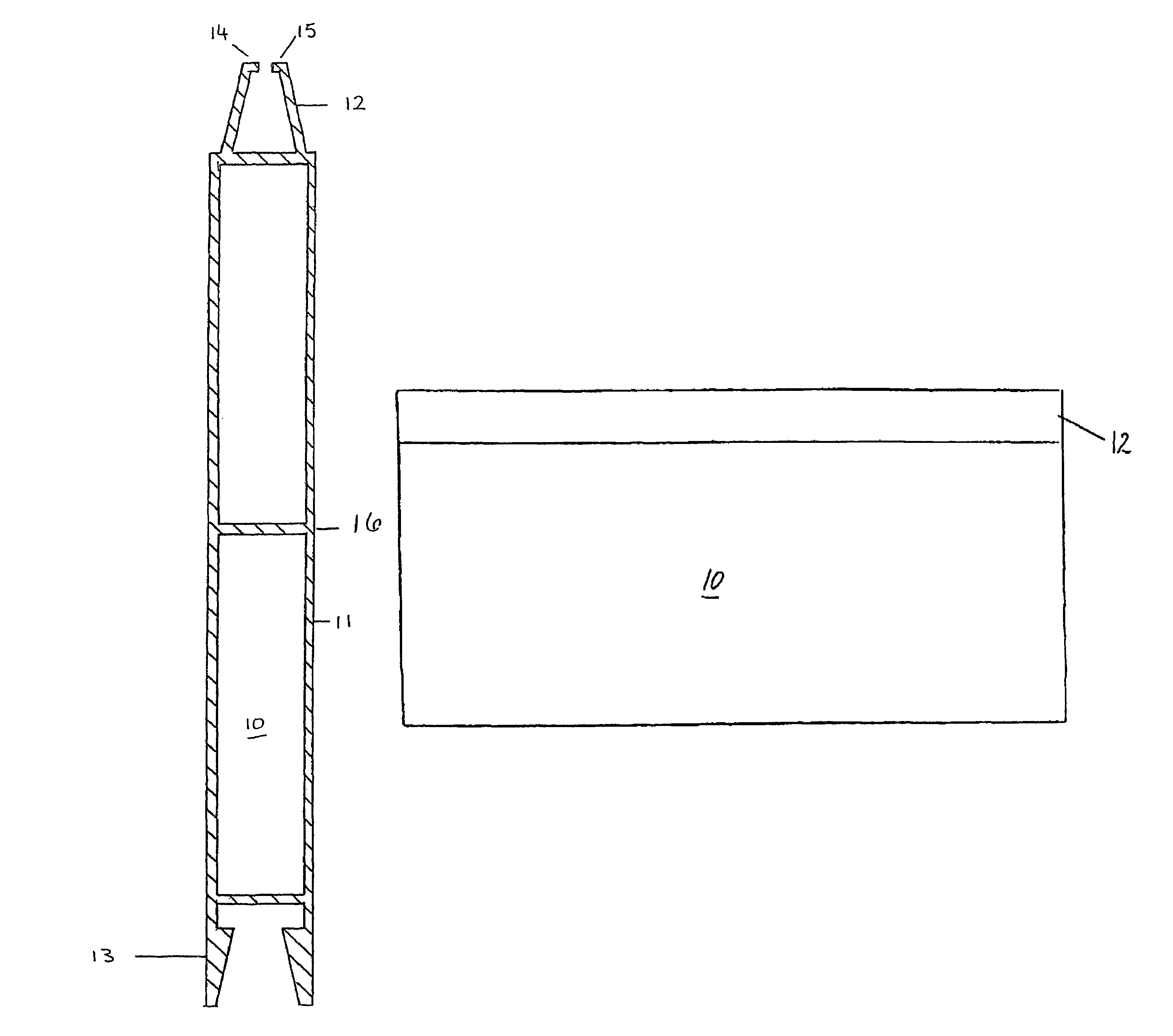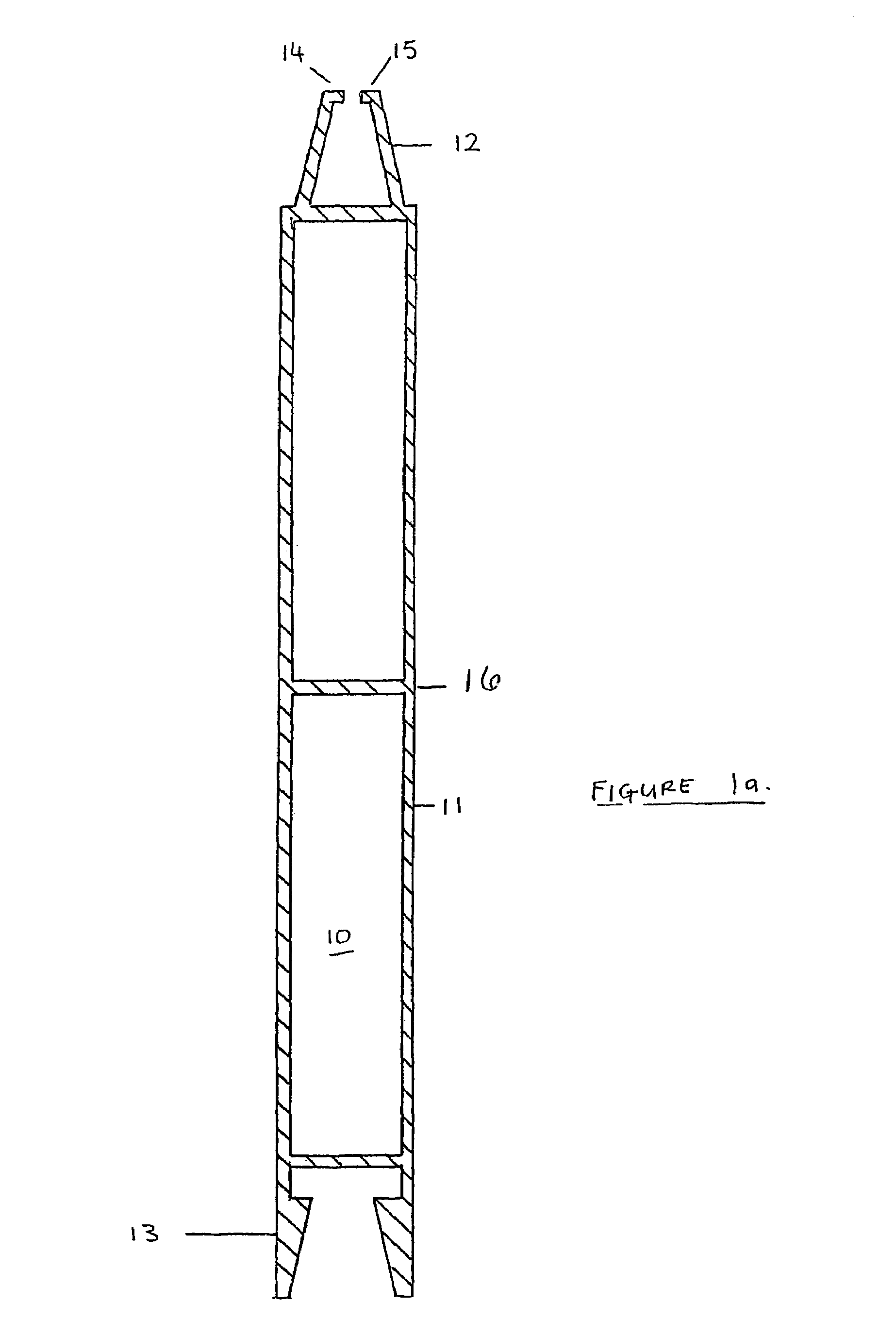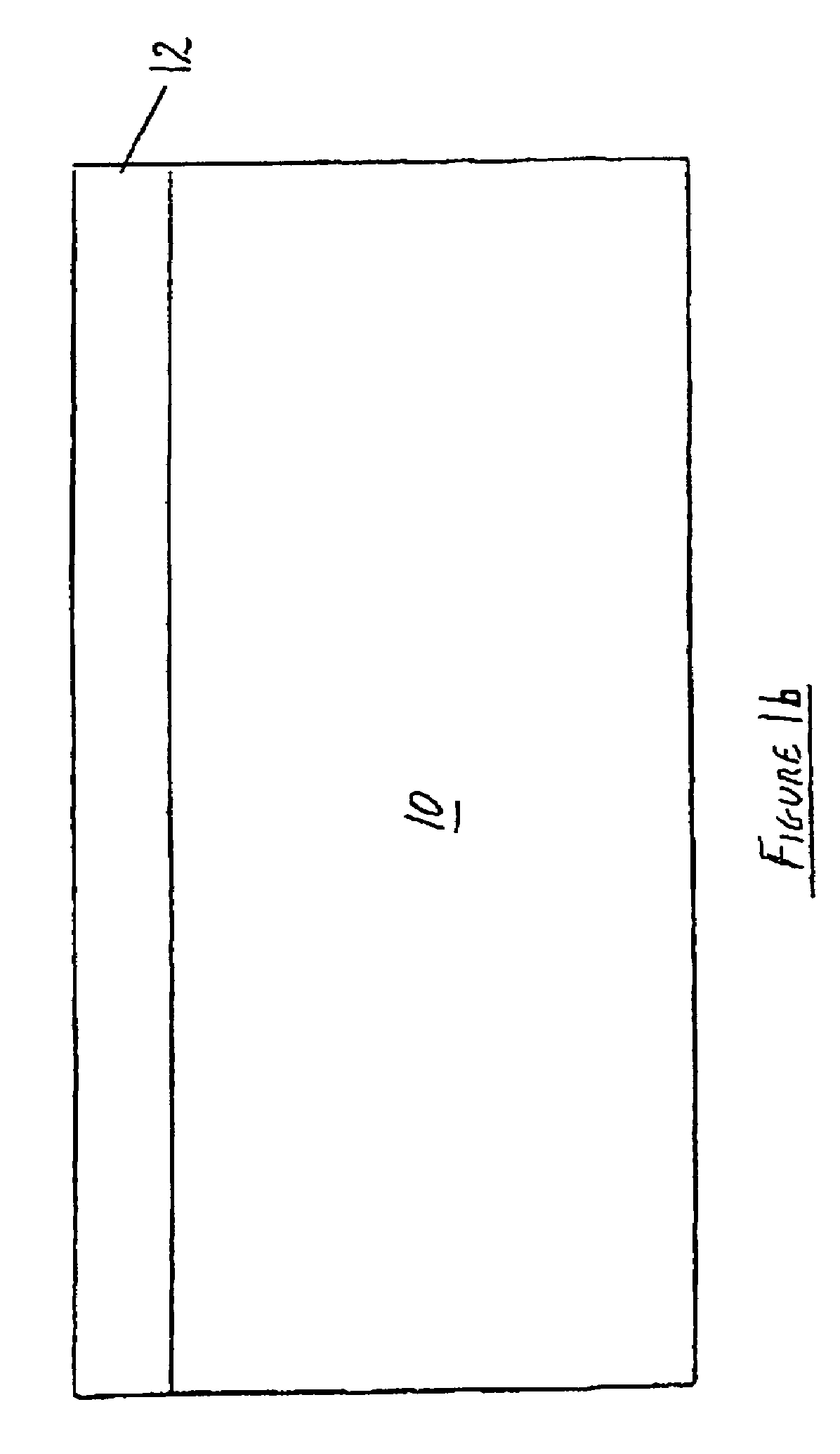Floodwater barrier
a technology of water barrier and sluice chamber, which is applied in the direction of flood panels, shutters/movable grilles, wing frames, etc., can solve the problems of large damage, large damage, and damage to crops, roadways and other externally located constructions, and achieve the effect of improving the water sealing properties of the apparatus, increasing the strength of the seal, and rapid assembly
- Summary
- Abstract
- Description
- Claims
- Application Information
AI Technical Summary
Benefits of technology
Problems solved by technology
Method used
Image
Examples
Embodiment Construction
[0043]In FIG. 1, a panel 10 comprises a surface 11, which, in use, faces and engages the flood waters and prevents their entry through an aperture of a building. The panel 10 has an upper panel-engaging portion 12 and a lower panel-engaging portion 13. The upper and the lower panel-engaging portions 12,13 run the length of the panel 10, and in use co-operatively sealingly engage with the corresponding lower and upper portions of further panels 10. The upper panel-engaging portion 12, has two flanges 14,15 extending inwardly. The panel 10 is hollow, a cross-piece 16 providing additional strengthening to the panel.
[0044]The panel 20 of FIG. 2, illustrates a further configuration of a lower panel-engaging portion 21. FIG. 3 illustrates two panels 10 co-operating to form a water-tight seal. Barriers to prevent flood waters from entering through an aperture can thus be built up in height, in accordance with the height of the flood water.
[0045]FIG. 4 illustrates a housing 40 to retain the...
PUM
 Login to View More
Login to View More Abstract
Description
Claims
Application Information
 Login to View More
Login to View More - R&D
- Intellectual Property
- Life Sciences
- Materials
- Tech Scout
- Unparalleled Data Quality
- Higher Quality Content
- 60% Fewer Hallucinations
Browse by: Latest US Patents, China's latest patents, Technical Efficacy Thesaurus, Application Domain, Technology Topic, Popular Technical Reports.
© 2025 PatSnap. All rights reserved.Legal|Privacy policy|Modern Slavery Act Transparency Statement|Sitemap|About US| Contact US: help@patsnap.com



